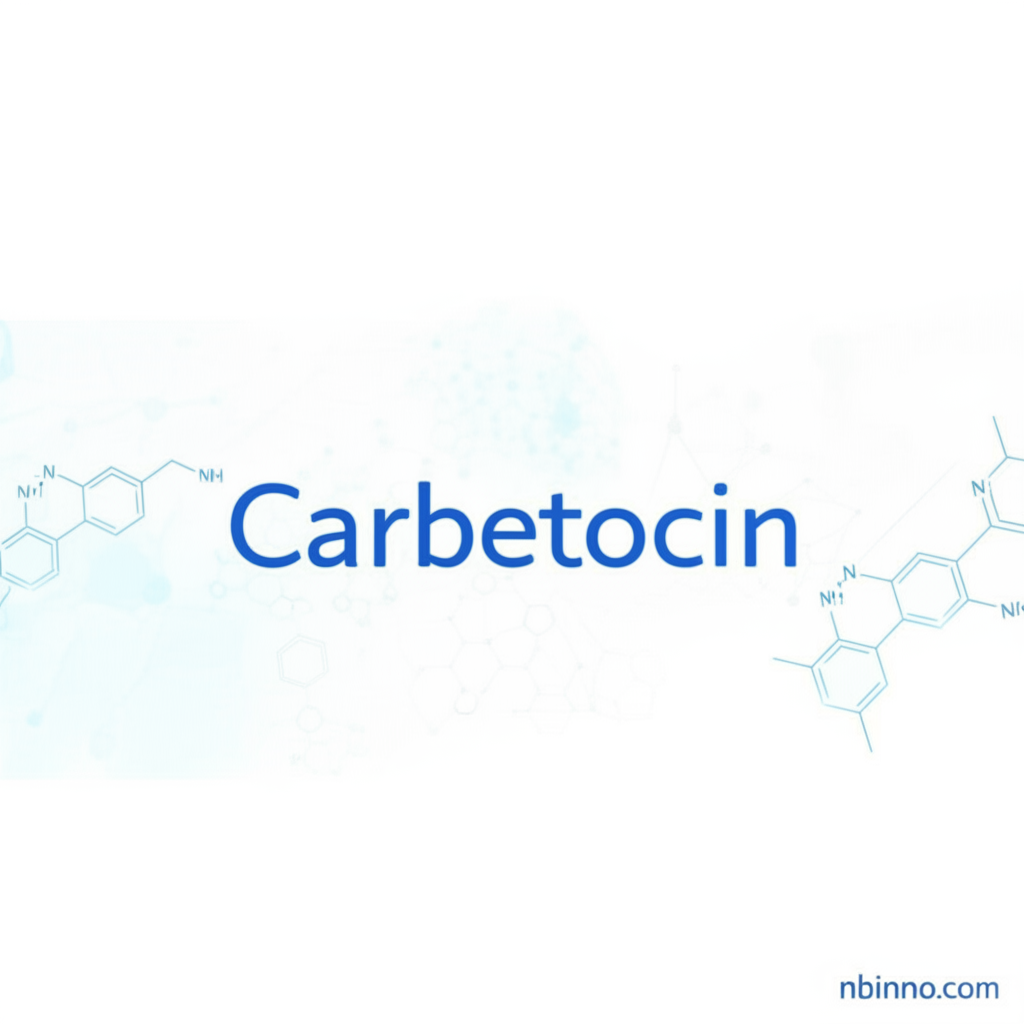Carbetocin: A Comprehensive Guide to Its Applications and Benefits in Postpartum Hemorrhage Prevention
Discover the advanced solution for preventing postpartum bleeding and ensuring maternal safety.
Get a Quote & SampleProduct Core Value

Carbetocin
Carbetocin is a synthesized long-acting analog of oxytocin, designed to effectively prevent postpartum hemorrhage (PPH) by inducing uterine contractions. Its improved stability and prolonged action make it a valuable tool in obstetric care, particularly in settings where maintaining a cold chain for traditional oxytocin can be challenging.
- Explore the vital role of carbetocin for postpartum hemorrhage in enhancing maternal safety.
- Understand the key differences between carbetocin vs oxytocin for PPH management.
- Learn about the advantages of heat-stable carbetocin benefits for global health initiatives.
- Delve into the carbetocin mechanism of action and its uterotonic effects.
Key Advantages
Enhanced Stability
The development of heat-stable carbetocin offers significant advantages, addressing the challenges of cold chain management in diverse healthcare environments and ensuring reliable access to PPH prevention.
Prolonged Efficacy
Carbetocin's longer half-life compared to oxytocin means its effects are more sustained, providing prolonged uterine tone and reducing the need for repeated administrations, which is beneficial for both patients and healthcare providers.
Improved Maternal Safety
By effectively preventing postpartum bleeding, carbetocin contributes significantly to maternal health, reducing morbidity and mortality rates associated with PPH and ensuring better outcomes after childbirth.
Key Applications
Postpartum Hemorrhage Prevention
Carbetocin is primarily indicated for the prevention of postpartum hemorrhage following childbirth, particularly after Cesarean sections, by promoting sustained uterine contractions.
Uterine Contraction Induction
It functions as a uterotonic agent, stimulating and maintaining uterine muscle tone to prevent excessive bleeding during the third stage of labor.
Cesarean Section Support
Its application immediately after Cesarean sections helps restore uterine integrity and minimize the risk of bleeding complications.
Global Health Initiatives
The heat-stable formulation of carbetocin is crucial for low- and middle-income countries, overcoming logistical hurdles in PPH prevention where cold chain infrastructure is unreliable.
